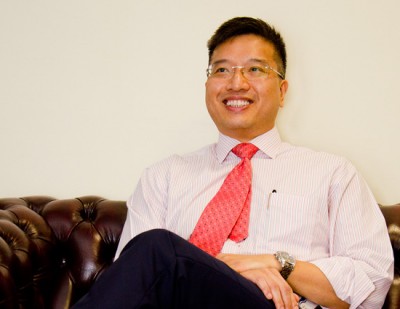Why Singapore’s English Teachers Should Embrace Singlish, Not Fight It
Is it time for Singaporean educators to embrace Singlish as a legitimate learning tool? What the Research […]
Read More
The theme for this year’s Redesigning Pedagogy Conference was Thinking: Time for a Rethink? Co-convenor Dr Kerry Lee tells us why we need to take a closer look at thinking, especially in education.
Dr Kerry Lee has noticed something curious about the field of psychology: Thinking doesn’t come up as often as we might expect it to in the research literature.
 “It’s strange that you don’t hear much about thinking or read very much about it,” he comments. After all, psychology is “what’s happening between your two ears and how thinking affects your behaviour”.
“It’s strange that you don’t hear much about thinking or read very much about it,” he comments. After all, psychology is “what’s happening between your two ears and how thinking affects your behaviour”.
In contrast, thinking is a big thing in the education literature, with a number of journals devoted to thinking.
It comes as no surprise that educators are so concerned about it. In order to learn, we need to think. And it seems that more than ever, our students need to be strong thinkers.
The theme for the Redesigning Pedagogy Conference 2013 was Thinking: Time for a Rethink? At the opening ceremony, Senior Minister of State for the Ministries of Law and Education Indranee Rajah described a new world order that our students will face when they graduate.
It is one characterized by immense technological advancements, which results in a high degree of change in the way we live, work and interact.
“This change will not be comfortable,” she observed. “The world that our students will inherit will become increasingly complex, and so will the problems they will encounter.”
What we as educators can do to help students now is to cultivate in them a strong set of critical and inventive thinking skills and dispositions.
Kerry, who is the co-convenor of this year’s conference (along with Associate Professor Manu Kapur), was trained as a psychologist and is now studying cognitive development in the context of education. He is well aware that thinking is a wide-ranging concept and different fields study it rather differently.
The five keynote speakers were thus carefully chosen for the different perspectives they bring to the conference theme.
For example, Professor Neil Mercer adopted the psycholinguistics perspective in looking at how language and talk can help students think together (see “The Value of Talking” in this issue).
This year, educators and researchers also got to hear what the youth of today have to say about education. Adora Svitak, a 15-year-old American youth, writer and public speaker, was invited to talk about the potential of youth digital culture in enhancing learning.
What we called “mugging” is not blind learning; it’s not mindless. A lot of thinking has to be involved if you were to remember anything at all.
– Kerry Lee, Centre for Research in Pedagogy and Practice
Kerry has his own take on the conference theme: There’s a lot more to thinking that we need to think about!
For example, how do we measure thinking? He explains that researchers and scholars had come up with terms such as critical or inventive thinking in order to organize thinking into smaller, manageable chunks that they could study and measure.
And really, what they measure isn’t thinking itself, but manifestations of thinking. In the same way that researchers need to operationalize, say, creative thinking, teachers should also be clear about what they’re looking for when assessing whether students are being creative.
What is creative thinking? Are there different exemplars of it? Is one better than another? These are all questions that teachers should consider as they take their students through the thinking process.
Another question for us to think about is the role of thinking in learning. Their relationship may not be so obvious in certain instances. For example, we assume that students are not actively thinking when they’re mugging for exams. Kerry begs to differ.
“What we called ‘mugging’ is not blind learning; it’s not mindless. A lot of thinking has to be involved if you were to remember anything at all,” he points out.
Here, Kerry points to the popular perception that Asian students prepare for exams by doing one practice test after another and how it is often viewed negatively.
“It’s been found in some schools in Mainland China that they do practise a lot. But they do not blindly practise, and they practise on problems that are quite complex,” he says.
“What the practising does is that it helps them to be attuned to the complexity and variations in different patterns and problems, so that they become more flexible in the application of knowledge.”
We’re still looking for answers to many big questions about thinking. But Kerry hopes that the conference this year has at least given teachers a better understanding of the different ways to perceive thinking.
“I hope that they had the opportunities to hear what the teachers of other schools are doing, and that they gathered some ideas and practices that they can use in their schools,” he says.
“Ultimately, you can’t expect overnight changes. But I hope it planted the seeds of curiosity.”
Useful Resource
The speech that Ms Indranee Rajah gave at the Opening Ceremony of the Fifth Redesigning Pedagogy International Conference can be found on the Ministry of Education website: https://www.moe.gov.sg/media/speeches/2013/06/03/speech-by-ms-indranee-rajah-at-the-opening-ceremony-of-the-fifth-redesigning-pedagogy-international-conference.php